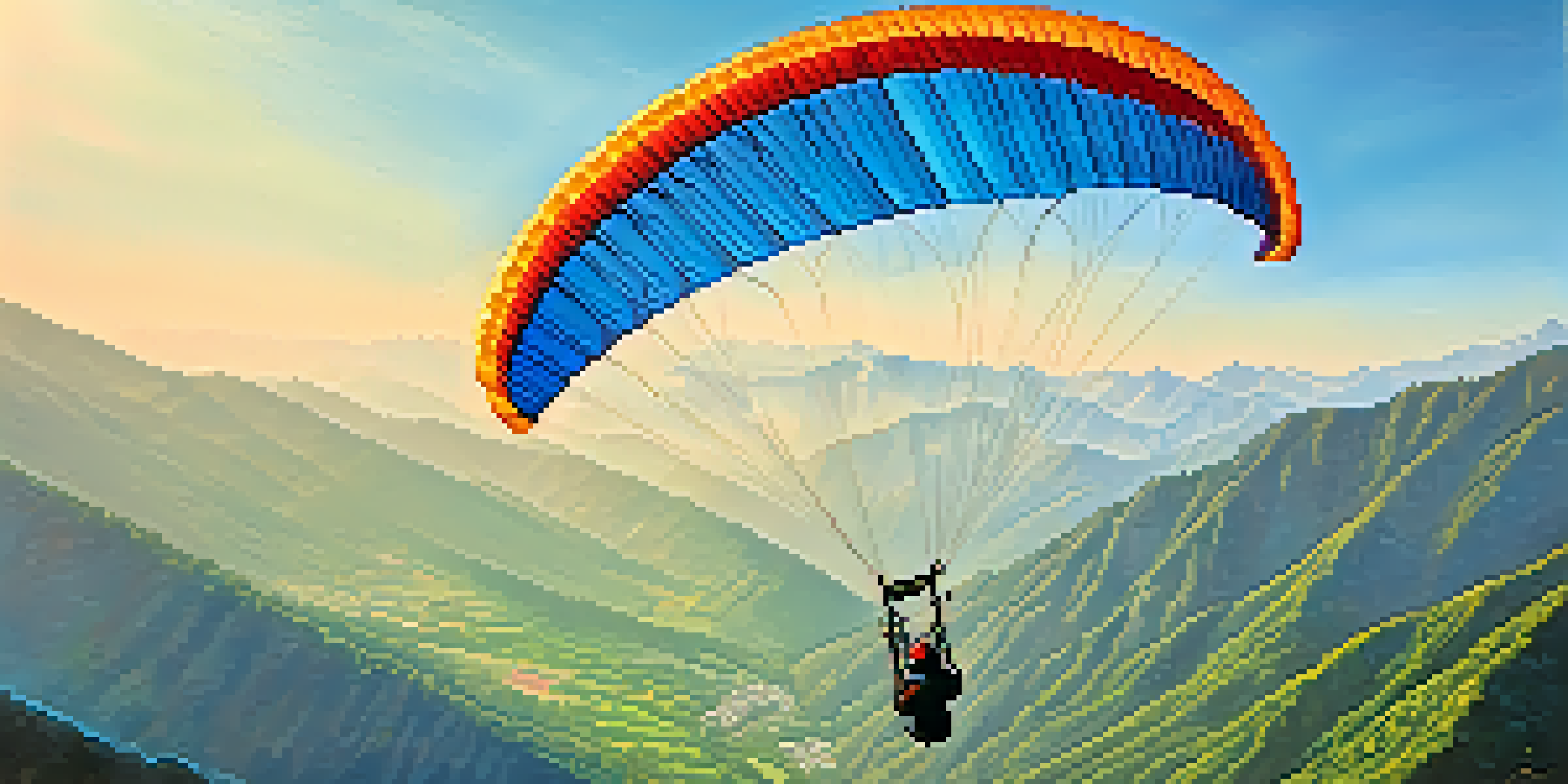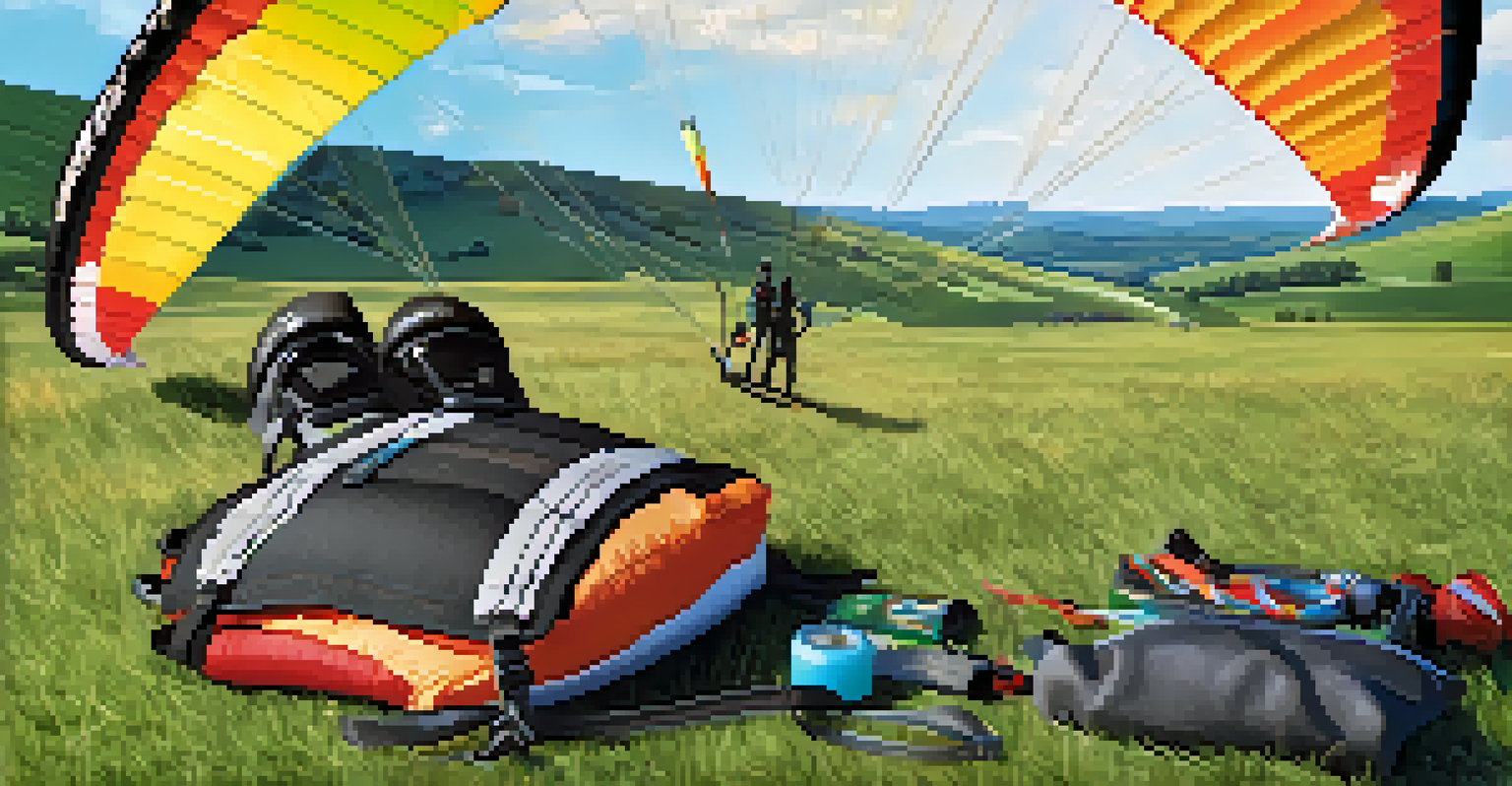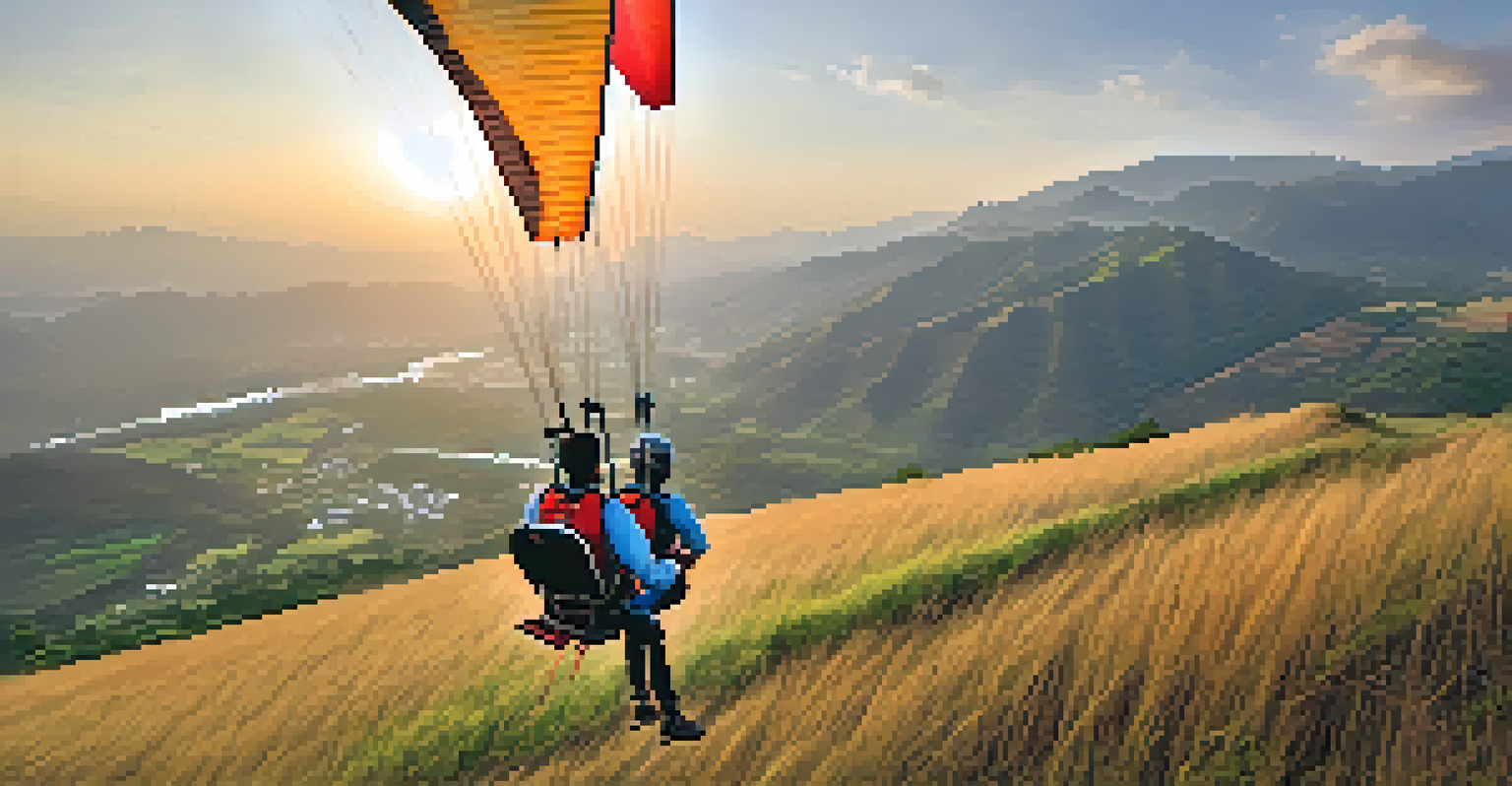The Ultimate Beginners' Guide to Paragliding in India

Understanding Paragliding: The Basics and Beyond
Paragliding is an exhilarating adventure sport that allows you to soar through the skies, feeling the freedom of the wind beneath you. Essentially, it involves flying a lightweight, free-flying foot-launched aircraft known as a paraglider. This sport is not just about flying; it's about experiencing the beauty of nature from a unique perspective.
The engine is the heart of an airplane, but the pilot is its soul.
In India, paragliding has gained tremendous popularity, especially in stunning locations like Himachal Pradesh, Uttarakhand, and Maharashtra. These regions offer the perfect blend of mountains, valleys, and favorable weather conditions, making them ideal for both beginners and experienced pilots. The thrill of launching from a hilltop and gliding over picturesque landscapes is something that every adventure seeker should experience.
Before you dive in, it’s important to understand that paragliding involves both excitement and responsibility. Safety is paramount, which is why seeking proper training and adhering to guidelines is essential. Taking the time to learn about the sport will ensure your adventure is not only thrilling but also safe.
Choosing the Right Location for Your First Flight
India offers a variety of breathtaking locations for paragliding, each with its own charm and appeal. Popular spots like Bir Billing, Kamshet, and Mussoorie not only provide stunning views but also have reputable schools that cater to beginners. Choosing the right location can greatly enhance your experience, so it’s worth doing some research.

Bir Billing, for instance, is renowned for its ideal thermal conditions and is often considered one of the best paragliding sites in the world. With its lush greenery and panoramic views of the Dhauladhar mountain range, it's a perfect spot for novices. On the other hand, Kamshet, near Pune, is known for its accessibility and well-structured training programs, making it another excellent choice.
Paragliding Basics and Safety
Understanding the fundamentals of paragliding, including safety measures and proper training, is essential for a thrilling and secure experience.
Ultimately, the right location will depend on your preferences, such as scenery, weather, and the reputation of local instructors. It’s a good idea to read reviews and perhaps connect with fellow paragliders to find the best spot that suits your needs.
Getting Started: Essential Gear and Equipment
When it comes to paragliding, having the right gear is crucial for both safety and performance. The basic equipment includes a paraglider, harness, helmet, and reserve parachute. Each piece of gear plays a vital role, and understanding their functions will help you feel more confident in the air.
The only limit to our realization of tomorrow will be our doubts of today.
Your paraglider is your wings, and it comes in various sizes and types depending on your weight and skill level. A certified instructor will help you choose the right one for your first flight. The harness, which connects you to the paraglider, should be comfortable and properly fitted to ensure you can maneuver effectively.
Lastly, a helmet is non-negotiable. It protects your head during takeoff and landing, which are the most critical phases of your flight. Investing in quality equipment not only enhances your experience but also ensures your safety as you take to the skies.
Finding a Reputable Paragliding School or Instructor
Selecting a qualified paragliding school or instructor is one of the most important steps in your paragliding journey. Look for schools that are certified by recognized organizations, as they will follow safety protocols and provide proper training. Reviews and testimonials from former students can also provide insight into the quality of instruction offered.
A good instructor will not only teach you the technical skills needed for paragliding but also instill confidence and ensure you understand safety measures. They will guide you through each stage, from the initial ground training to your first solo flight. Remember, the right instructor can make a world of difference in your learning experience.
Choosing the Right Location
Selecting an ideal paragliding location, like Bir Billing or Kamshet, enhances your adventure and ensures access to reputable instructors.
Additionally, many schools offer tandem flights, where you can fly with an experienced pilot. This is a fantastic way to experience paragliding without the pressure of flying solo right away. It's also a great opportunity to see if this sport truly resonates with you.
Understanding the Weather: Key Factors to Consider
Weather plays a pivotal role in paragliding, influencing both safety and enjoyment. Before you fly, it’s essential to check the wind speed, direction, and overall weather conditions. Ideal conditions typically include light winds and clear skies, which make for smoother flights.
In India, the paragliding season varies by region, but generally, the best time to fly is during the cooler months, from October to March. During this period, the weather is more stable, and you can expect fewer thunderstorms and unpredictable winds. Always consult with your instructor or school about the best times to fly in your chosen location.
Learning how to read weather patterns not only enhances your flying experience but also ensures your safety. Your instructor will provide valuable insights into what conditions are suitable for paragliding, helping you make informed decisions.
Safety First: Essential Tips for Beginners
As with any adventure sport, safety should always be your top priority in paragliding. Start by following your instructor’s guidance and never attempt to fly beyond your skill level. Familiarize yourself with the equipment and understand how to use it properly before taking to the skies.
Additionally, it’s wise to undergo a thorough briefing about emergency procedures. Knowing what to do in case of unexpected situations can make all the difference. Regularly practicing safety drills and understanding the risks associated with paragliding will help you feel more prepared.
Essential Gear for Beginners
Having the right gear, such as a paraglider, harness, and helmet, is crucial for both safety and performance in paragliding.
Lastly, always respect the airspace and other pilots. Communication is key in the skies, so staying aware of your surroundings will help maintain safety for everyone. Embrace the thrill, but remember that safety is your best friend when soaring through the clouds.
The Joy of Paragliding: What to Expect on Your First Flight
Your first paragliding flight is sure to be a memorable experience, filled with excitement and perhaps a bit of nervousness. As you prepare for takeoff, you’ll feel a rush of adrenaline. Your instructor will guide you through the necessary steps, ensuring you feel comfortable and ready to soar.
Once you’re airborne, the feeling of floating through the sky is unparalleled. The breathtaking views and the sensation of freedom will likely leave you in awe. Many beginners describe it as a mix of thrill and tranquility, as you glide above stunning landscapes while the wind gently caresses your face.

After landing, you’ll probably find yourself buzzing with excitement, eager to share your experience with friends and family. Paragliding not only offers a unique perspective of the world but also opens the door to a community of fellow enthusiasts, all sharing a passion for flying.